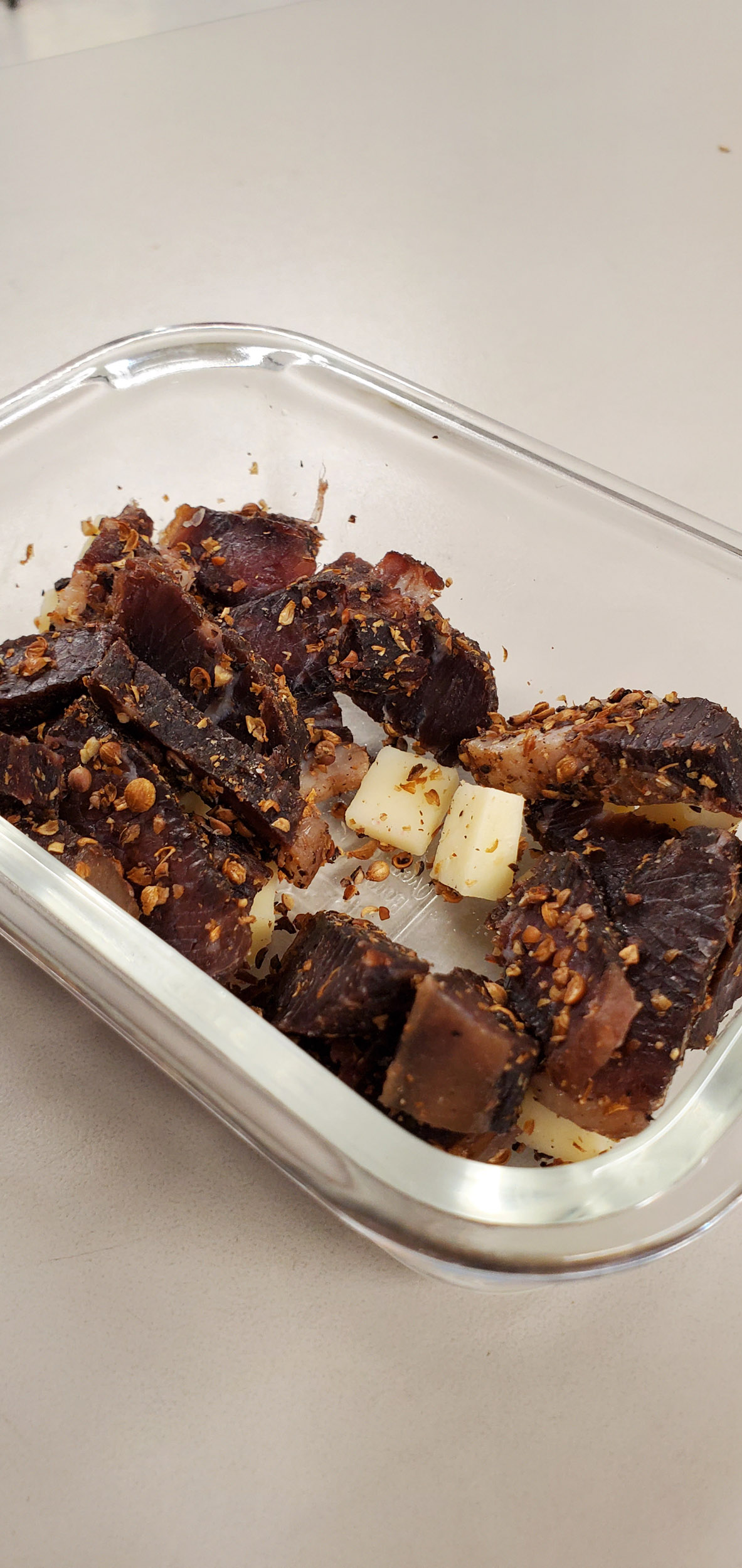
BILTONG
Biltong is a delicious South African dried meat snack that's cured in vinegar, covered with spices, and then hung to dry for a few days. You can make it with pretty much any kind of meat. (Traditionally it was made with venison or beef.) It's chewy and some parents in South Africa give it to babies when they're teething. Like any dried meat, biltong is expensive to buy, but magnitudes cheaper to make yourself.
WHAT YOU NEED

-
MEAT
Biltong can be made with lots of kinds of meat, but I use beef, specifically the round cuts. I dry four to eight pounds at a time. Expect it to lose about 40% of its weight as it dries.
-
VINEGAR
To cure the meat. I use white vinegar but you can use other types too.
-
SALT
(Coarse) for the seasoning. For four pounds of meat (about 2 kilos), I use like 1/4 of a cup.
-
PEPPERCORNS
We'll grind these peppercorns. For the seasoning. For four pounds of meat I use about a third of a cup of peppercorns.
-
CORIANDER SEEDS
We'll grind these, too...gently. For the seasoning. For four pounds of meat I use half a cup of coriander seeds.
-
BIG OLD BOX
You'll let the meat hang in this box for a few days to dry. You can literally use any old box, it's not like the meat's gonna be touching it.
-
A COUPLE OF STICKS
Or rods or something, for the meat to hang from. You can even use tree branches.
-
PAPERCLIPS
Or just some kind of hook to pierce the meat with so you can hang it from the sticks.
1 - Slice the meat

I use bottom-round rump roasts like this one. But you can use whatever you want. More flavorful meat should make more flavorful biltong. Some people like fatty meat, others don't. They say you should buy meat whose grain runs down the long side of the cut. IDK if it matters.
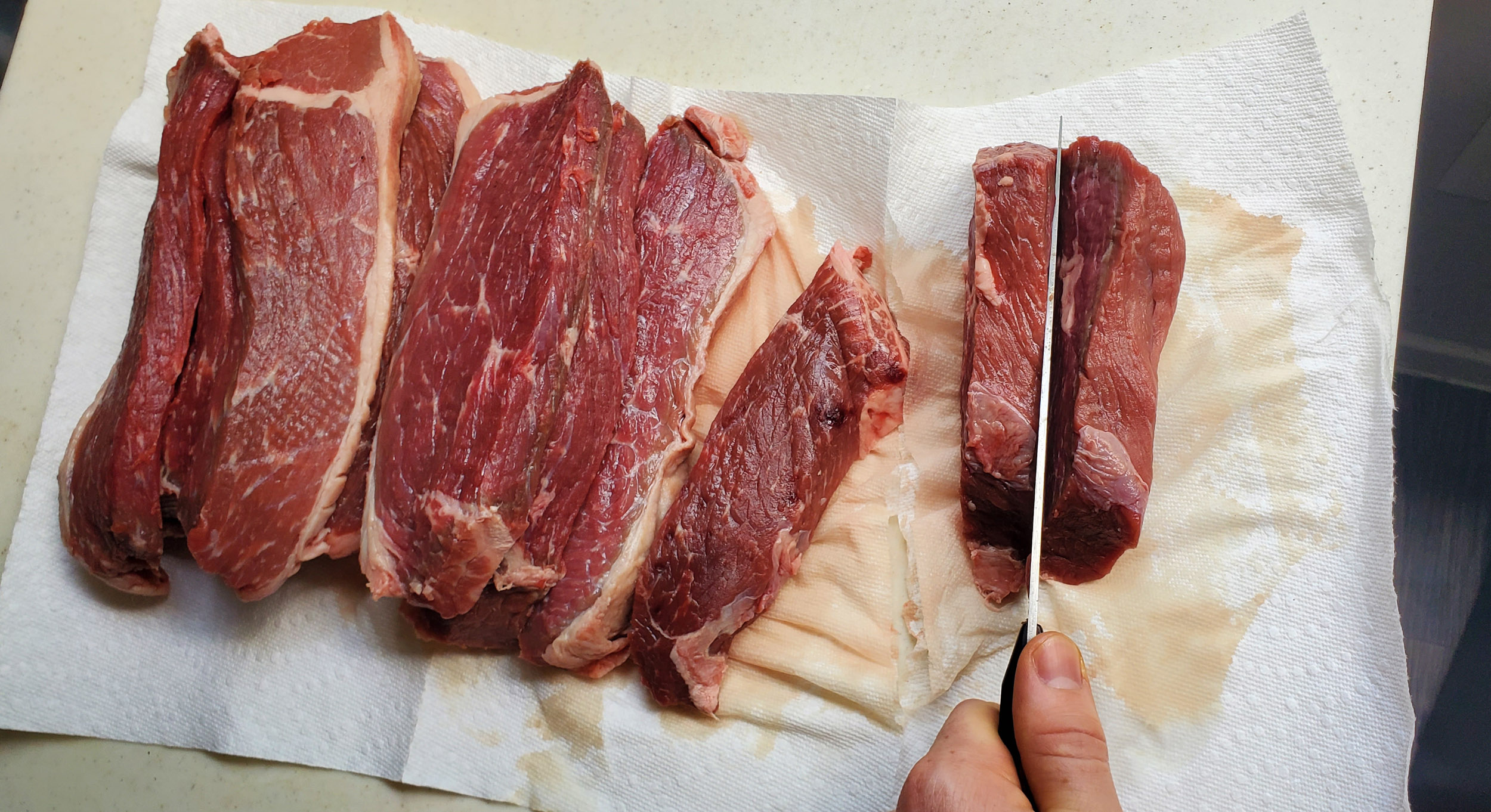
Don't that look fancy.
Slice the meat into strips. Each strip can be like 2 inches wide, and 1 or 2 centimeters deep. I usually get 3 to 4 slices per pound, using the cuts shown in the photos. Remember, they'll shrink as they dry. I cut my pieces a bit thinner nowadays than I did in this photo.
Thicker slices take longer to dry. If a piece is too thick, you risk case hardening. Case hardening is when the outside layer firms up but the inside stays wet and soft. The leathery outer dry layer prevents any more moisture escaping from inside. I'll explain later how to deal with this if it happens to you.
2 - PREPARE THEM SPICES
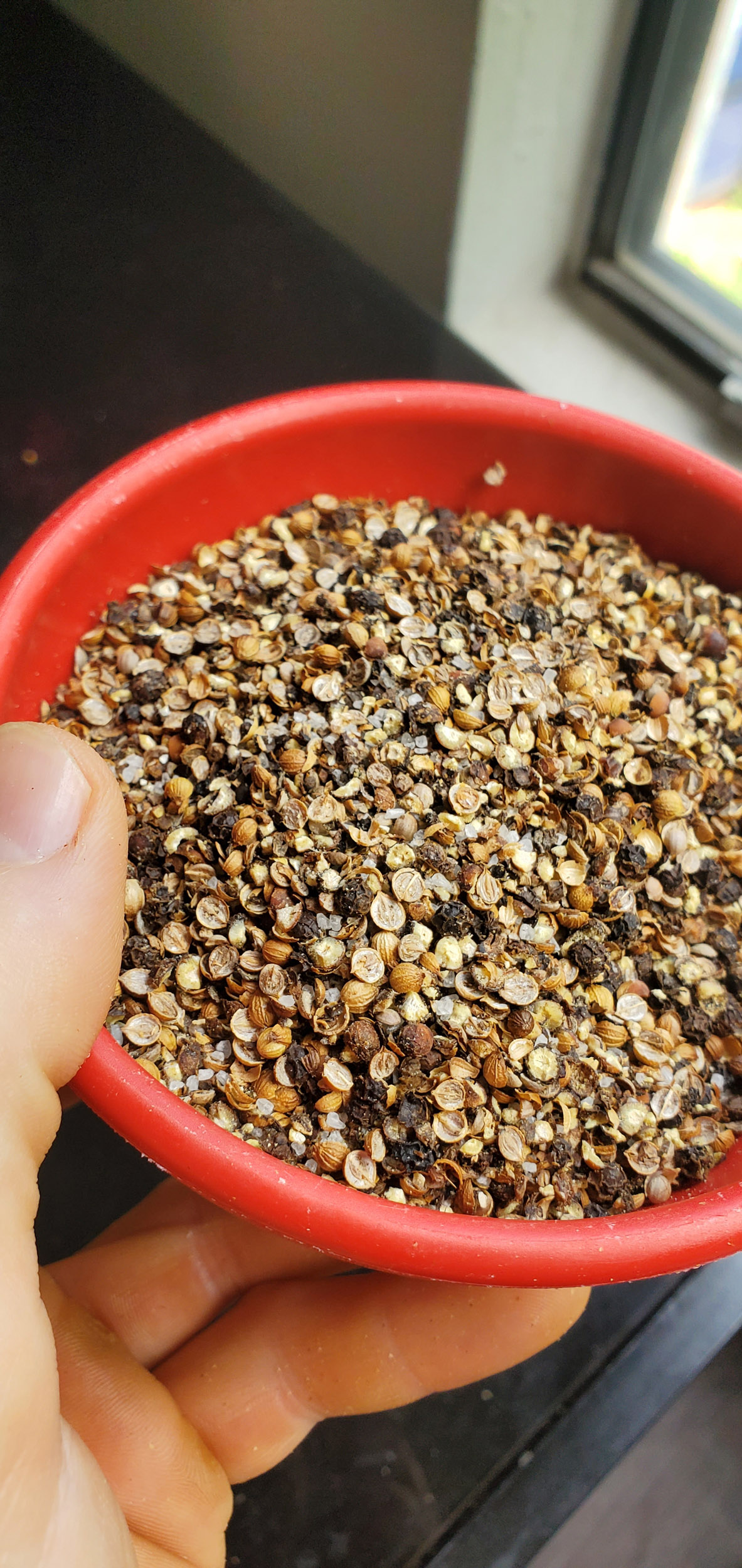
Traditional biltong uses coriander seeds, salt, and pepper. You can also add other things like chili pepper or brown sugar if you want to play around.
Toast the coriander seeds in a pot to darken them a bit to enhance the flavor. I like the coriander to be a bit coarse, not a fine powder. I used to bonk it with a mallet, but honestly it's easier to just put it in a blender for a second or two, if you have a small attachment that can cut up coriander.
Peppercorns are tougher and take more time to be crushed, so I grind them separately from the coriander.
This photo is a bit outdated, I actually think this is TOO coarse, but this is how I used to make it:
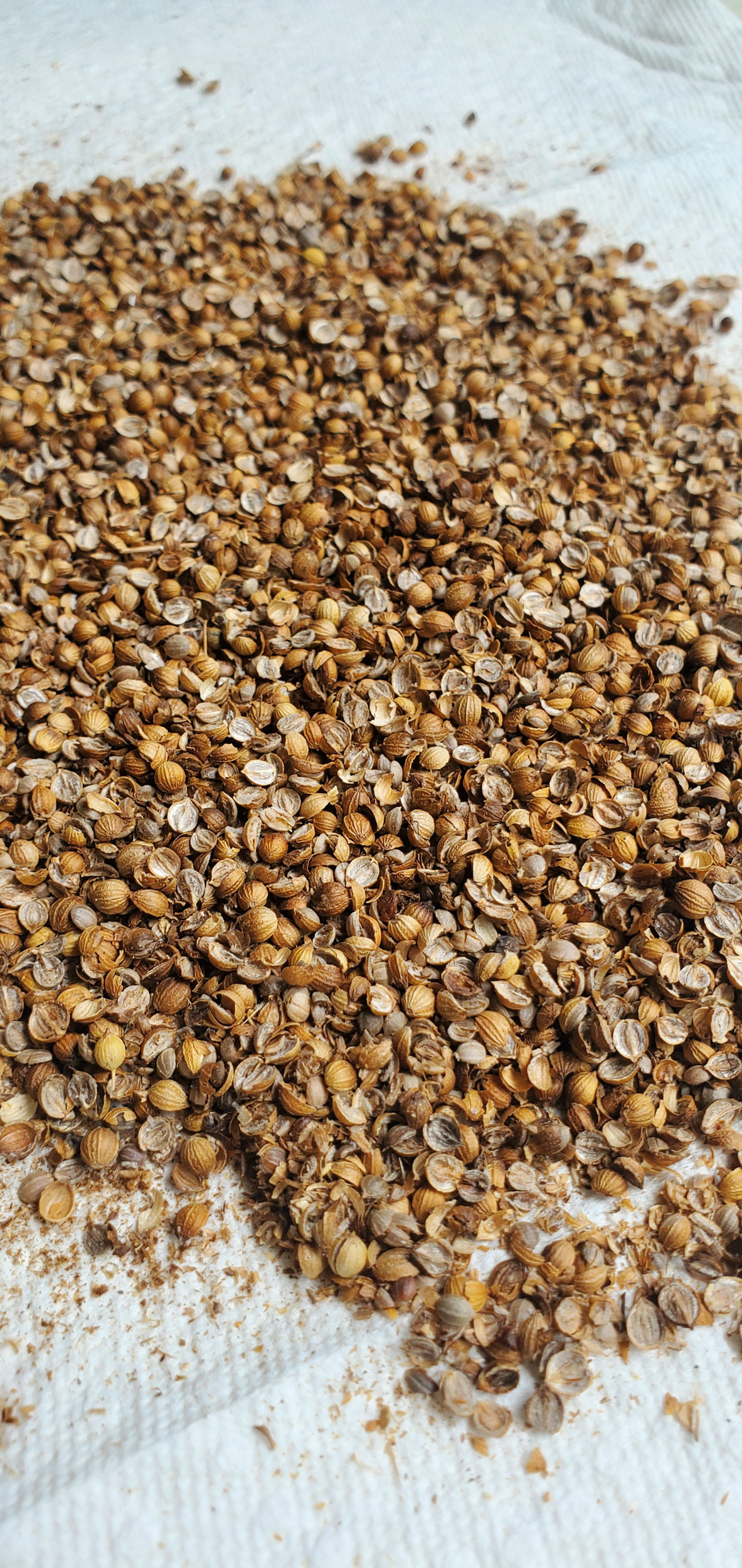
I used to use a coriander : pepper : salt ratio of about 1 : 1 : 2/3. But now I 've lowered the pepper content a bit. I recommend about 1 : 2/3 : 2/3. When I look online, people use all kinds of ratios. Play around with it.
3 - CURE IT ALL

Curing is the addition to meats of some combination of salt, sugar, nitrite and/or nitrate for the purposes of preservation, flavor and color. The Afrikaner pioneers in South Africa who migrated across the country with slow oxdrawn wagons had to preserve meat to make it last for periods when meat wasn't readily available. We will use our spices and vinegar to cure our meat. You'll need a dish for the meat to lie in while it cures. (You can use like a baking pan or something if you want.) I use some foil pans I got on sale a while ago.
As in this video, I just dip each slice of meat in the vinegar, rub it in a pile of spices, and set it in the tray. I've learned to be very liberal with the spices. The first time I made biltong, I didn't use enough spices. Now I know there's basically no such thing as "too much," so go wild.

Yum. Gently flick/drip more vinegar over the meat strips, the meat should be sitting in a little puddle of vinegar while it cures. Let it cure for a few hours. (I do an hour and a half on each side.)
4 - HOOK 'EM ROUND

OK choose a place to dry the biltong for the next few days. Choose a room with good ventilation, one that doesn't get humid. Air circulation helps it dry, so I position a fan to blow air at the gentlest setting to the box.

Now that the meat is cured, take it out, pierce the top of each strip with a paperclip hook, and hang it from a stick at the top of the box. Don't let the strips of meat touch the sides of the box, the bottom of the box, or each other.
When you take the meat out of the curing tray, some of the spices will fall off. Try to press them back onto the strips before you hang the strips.
The air circulation shouldn't be strong enough to make the biltong strips sway. Just a very weak air current, not even a zephyr. Too much wind and you get case hardening (leathery outer skin, moist raw innards).

5 - WAIT
Please wait a few days for it to dry. The meat will darken and become firmer. Mine is ready after three days. Be patient and enjoy the aromas!
6 - CUT AND EAT

The meat should be dark and firm when you take it off the hooks. The thin pieces dry faster. Take them off the hooks and cut one of the strips. Biltong is usually sliced like this:
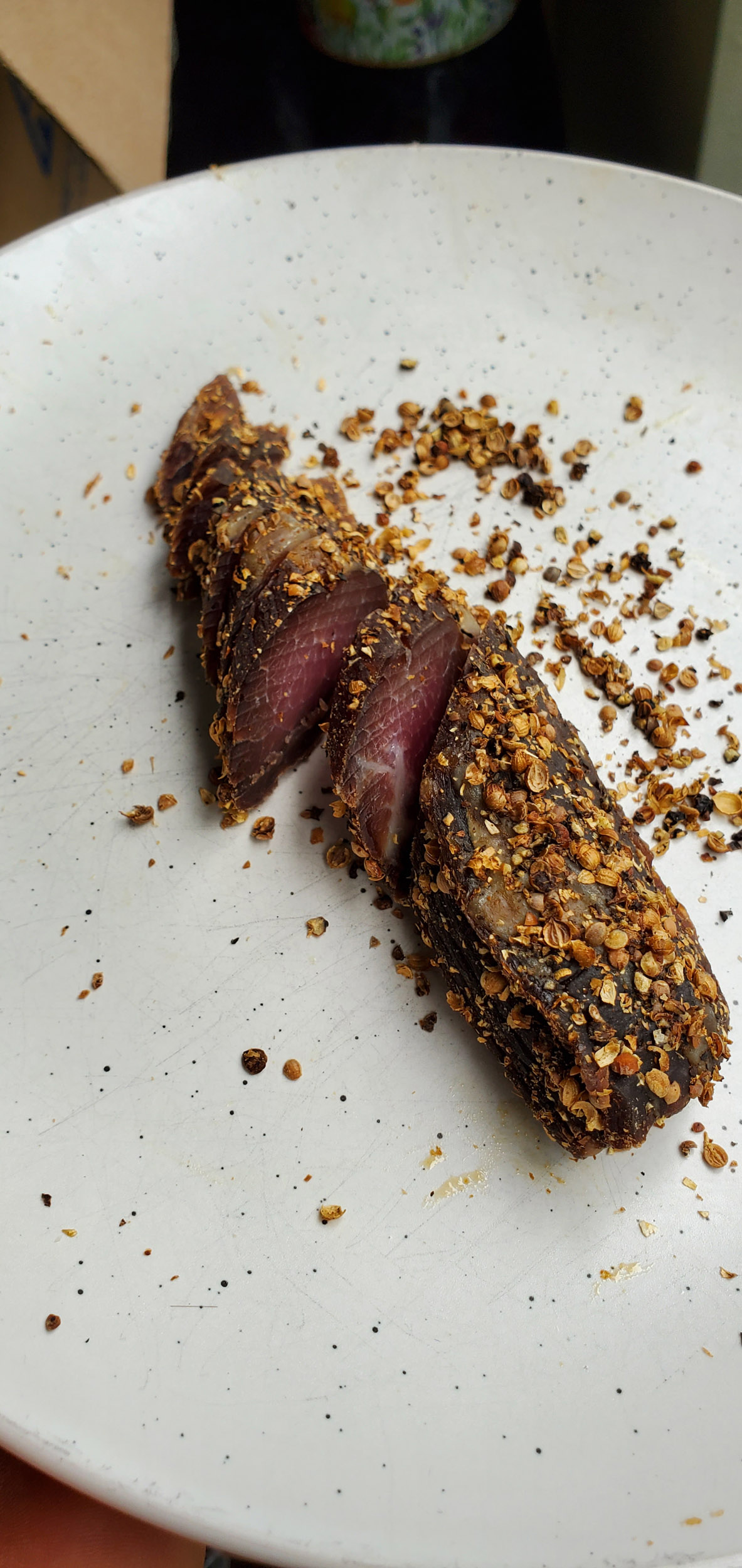
A lot of the spices fall off when you handle it and slice it. I like to press the slices into the spices so it keeps all their flavor.
If your meat has case hardening, and the inside is still soft even though the outer layer is dry and hard, then cut it now and give the small pieces more time to dry. Maybe the pieces were a bit thick, or the wind was too strong. You can spread them on a pan for a day or so until they are evenly dried.
I like it when it still has some redness inside. Everybody has a preference. Enjoy it, I love having it with some cheddar!
How much you save by making it yourself
I get my meat at HEB for about $3.75 per pound, which means each dried pound of meat is costing me between $6 and $7. All in all, counting the price of the spices and vinegar, I probably spend about $7 per pound when I make my own biltong this way, compared to the $40 per pound it seems to go for in shops.